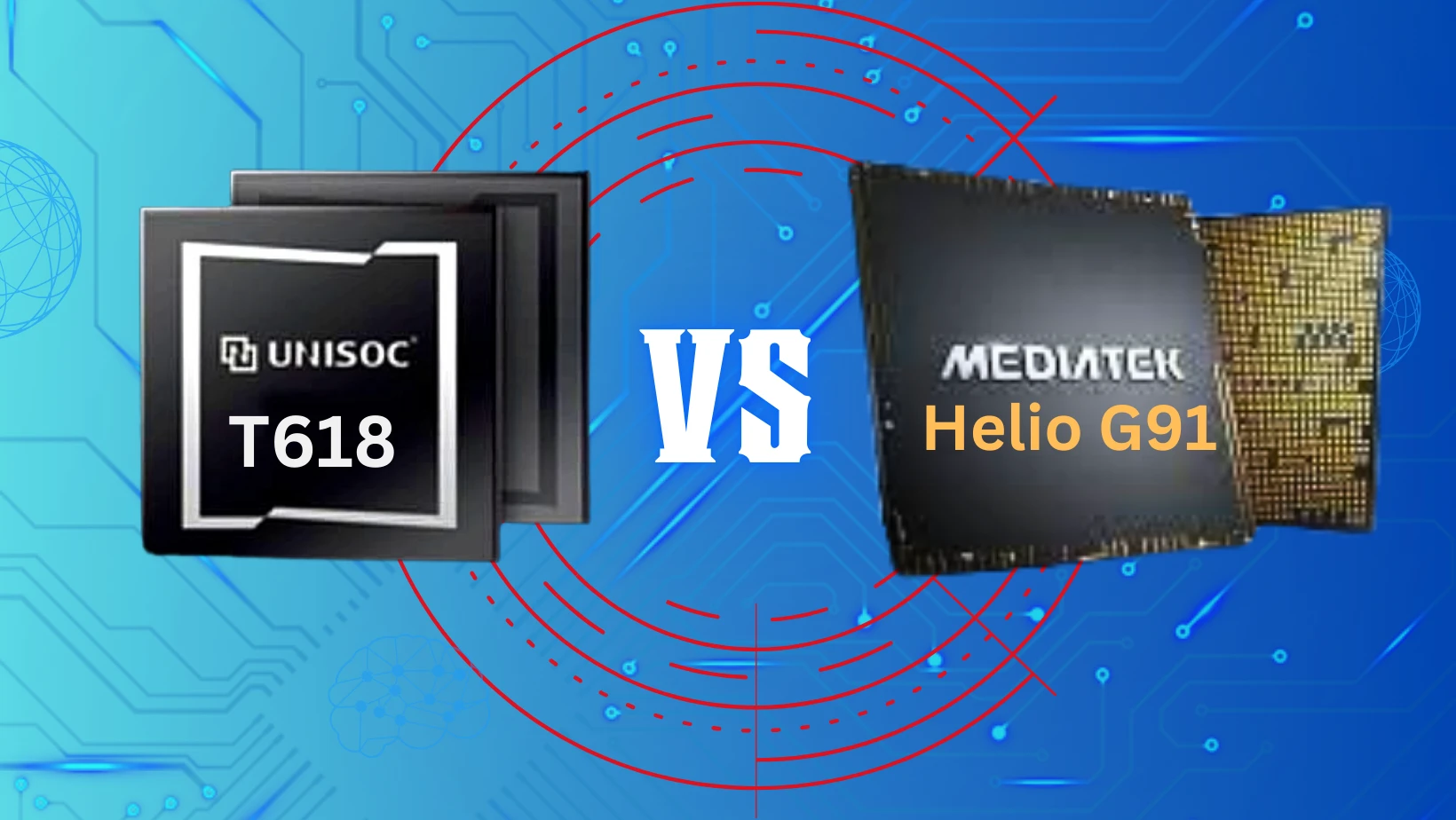Unisoc T618 vs MediaTek Helio G91
In the lower mid-range market, two SoCs that are tightly contesting in this space are the Unisoc T618 vs Helio G91. Read on to see which SoC is the better one.
One section of the market which a lot of manufacturers fight over is definitely the midrange segment. This is because it offers a great balance between performance and affordability, so lots of buyers have pitched their tents here, especially in the sub $300 category. The competition here is fierce, so join me as we look at two Midrange contenders, the Unisoc T820 vs MediaTek Helio G91.
The Unisoc Tiger T618 is a midrange SoC from Unisoc and it was announced in August of 2019. The T618 is now a bit dated so it's rather very surprising to see that manufacturers like ZTE are picking it up. It can be found on the Meizu 10, ZTE Axon 20 4G, ZTE Axon 40 SE, ZTE Blade V40S, ZTE Blade V40 Pro etc.
The MediaTek Helio G91 is a much newer SoC from the Taiwanese semiconductor giants, MediaTek. It was announced in June of 2024 and is mostly a remake of the older Helio G85/G88. It is also not all that popular as it can only be found on a handful of phones like the Poco M6, Redmi 13 and the Itel S24.
See: Unisoc T618 vs MediaTek Helio G91 - Full Specs Comparison
You may also be interested in:
- Snapdragon 4 Gen 2 vs Dimensity 1080
- Snapdragon 7+ Gen 2 Vs Dimensity 8200
- Snapdragon 7S Gen 2 Vs Dimensity 8050
- Snapdragon 7+ Gen 2 Vs Snapdragon 7 Gen 3
Performance of the Unisoc T618 vs Helio G91
Both SoCs literally use the same 2x Cortex A75 (2.0 GHz) + 6x Cortex A55 (1.8 GHz) microarchitecture for the CPU cores. They're also both built on the same 12nm process by the same company (TSMC). They are also tied when it comes to benchmarks as well, both on AnTuTu and GeekBench with differences being very negligible and having no effect on real world performance.
This similarity means that both SoCs are going to perform in very similar ways and have the same performance levels. They'll handle games, apps and other tasks the same way.
Gaming and Graphics of the Unisoc T618 vs Helio G91
The same story repeats itself here (well kind of) as both SoCs use the same GPU, the Mali G52 MC2. However, it is important to note that the Mali GPU on the Helio G91 is clocked much faster at 1000MHz. This means that the Helio G91 will handle games and graphics slightly faster than the Unisoc T618.
Memory and Storage
Both SoCs also support the same LPDDR4X RAM with roughly 1800MHz clock speed. They also both support an 8GB RAM max capacity. This means that they'll generally handle multitasking and app switching in the same way.
For storage, there's eMMC 5.1 support. This is rather old now but it is still decent for regular use and mild gaming.
Photos and Videos
For photos, the Helio G91 supports up to 108MP whilst the Unisoc T618 maxes out at 48MP. What this means is that the Helio G91 will take pictures better than the Unisoc T618. For videos however, both SoCs record 1080p video at 30fps. The Helio G91 has the upper hand here for photos.
Connectivity
For connectivity, as has been the theme of this comparison, both SoCs are also very similar. They do not support 5G but they support 4G LTE (Cat.7), WiFi 5 and Bluetooth 5.0. The Helio G91 however supports a better Bluetooth 5.4.
Possible battery life
The battery life on both of these SoCs is also similar but the Helio G91 is built on a more modern version of the 12nm TSMC process and thus should be more battery efficient.
Conclusion
Now it's decision time. Whilst both SoCs are decent budget/lower mid-range options and will give decent performance, you've got to pick one.
The MediaTek Helio G91 has the better gaming performance (GPU), camera resolution support and Bluetooth connectivity and possible battery life. It is not the widest of victories but it is decent enough. People who are interested in gaming and photography should go for phones with the MediaTek Helio G91.
The Unisoc T618 is on par with the Helio G91 in most areas, only falling behind in gaming, photography and Bluetooth support. It is also cheaper as well. Regular users who are okay with just using their phones should go for the Unisoc T618.
